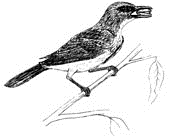Vertebrate Pest Conference: Proceedings

Vertebrate Pest Conference Proceedings: 17th (1996)
Date of this Version
1996
Document Type
Article
Citation
Published in Proceedings: Seventeenth Vertebrate Pest Conference … 1996, ed. Robert M. Timm & A. Charles Crabb (University of California, Davis, 1996).
Abstract
Although they provide catchy labels, "animal liberation" and "animal rights" have occasioned considerable misunderstanding and much pointless debate. 1 want, here, to explicate what I believe is being sought for animals under these labels. This explication should help to undo some of the misunderstandings about liberating animals and extending moral rights to them. After this explication, I will turn to the issue of the way in which scientific knowledge of natural entities, processes, and organizations is and is not relevant to animal liberation.
PART I: WHAT ANIMAL LIBERATION IS ABOUT
One of these misunderstandings concerns the use of "animal" in these labels. At most animal liberation presentations, there is someone who rises to inquire whether flies, cockroaches, and other vermin are to enjoy rights to life, liberty, and the pursuit of happiness. Is swatting a fly to be murder in the brave New World of animal rights? This heckler is soon joined, if not preceded, by another who accuses the animal liberationist of discriminating against plants and, consequently, being guilty of "fauna chauvinism." Do the arguments for animal liberation entail plant liberation as well? Of course, these hecklers are not sincere activists in the mosquito and tomato liberation movements. What they are attempting to do is to dispose of the animal liberation movement through a reductio ad absurdum argument. As William James noted many years ago, the first response to a revolutionary idea is ridicule.
Included in
Animal Sciences Commons, Bioresource and Agricultural Engineering Commons, Environmental Engineering Commons


Comments
Copyright © 1996 (where applicable) by the Vertebrate Pest Council of the Vertebrate Pest Conference. Used by permission.